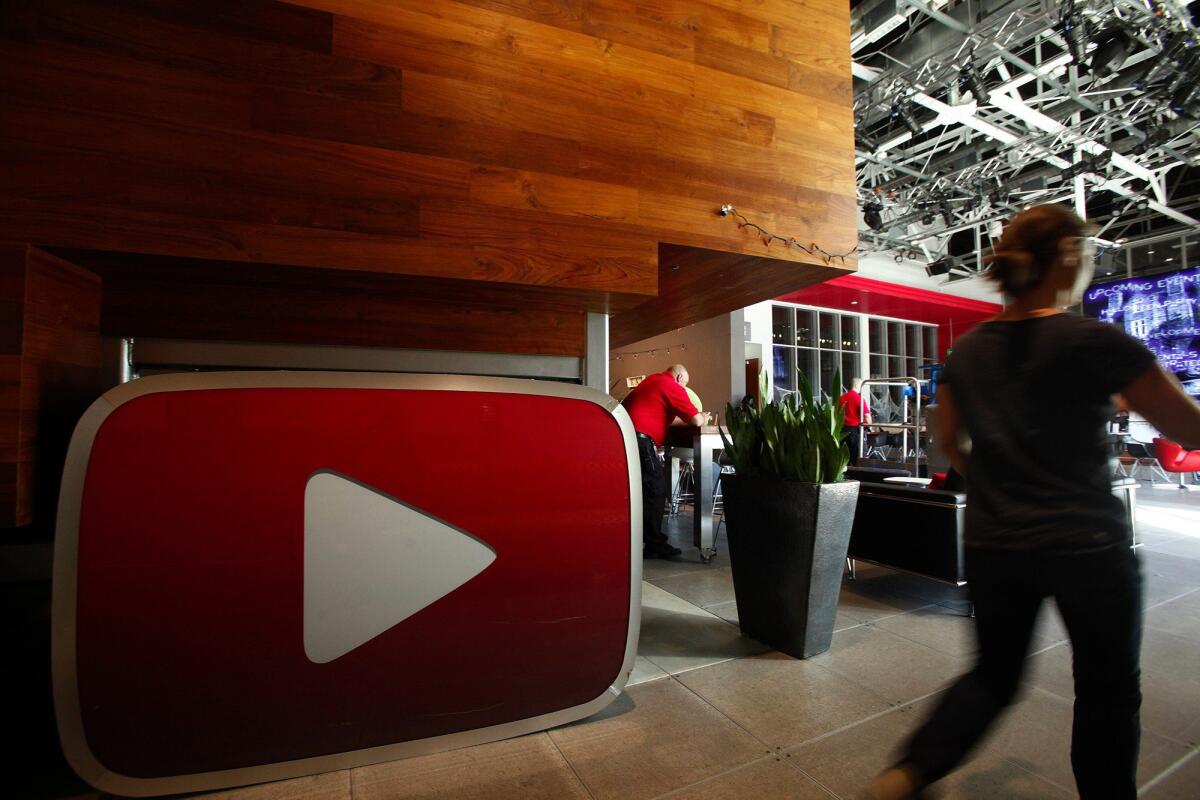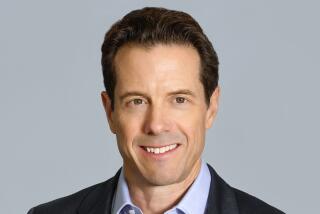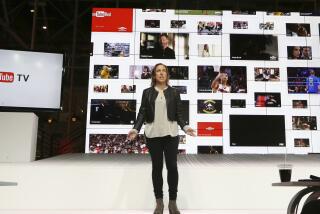Old media meets new media, and they like each other

It started out as a titanic clash between old and new media — and sort of petered out.
Earlier this year, Google Inc. and Viacom settled what had been billed as a landmark lawsuit over alleged copyright violations at YouTube, which Google acquired in 2006. Terms of the settlement were not disclosed.
When cable powerhouse Viacom filed the lawsuit in 2007, established media giants were trying to figure out how to combat the disruption to business models caused by rising digital media — a disruption the video-streaming behemoth YouTube helped click into motion.
But in the last few years, Viacom and others in the TV elite have come around to the idea of hitting the play button. Now YouTube is considered part of the mainstream, and media companies have figured out that the old-school approach of reeling in viewers has to be digitally augmented.
YouTube is a potent vehicle to reach younger viewers. Just look at the number of people who subscribe to the channel for Ellen DeGeneres’ talk show (Answer: more than 10 million) or the kids glued to iPads to watch “Sesame Street” clips, like the one featuring John Oliver with the Cookie Monster that nabbed nearly 800,000 views in a week.
It’s no wonder the platform has now become a key aspect to networks’ programming and marketing plans — from posting sneak peeks of news show to posting highlights or supplementary tidbits from episodes or mining YouTube’s talent pool and investing in its multi-channel networks to get in business with talent the younger audience is passionate about.
“It’s a process,” said Alex Carloss, head of YouTube originals. “But we’re seeing a growing number of television brands who are doing incredible experimentation on YouTube.”
Jimmy Kimmel last month implored viewers of ABC’s “Jimmy Kimmel Live!” to submit videos for this year’s installment of its YouTube video gag, “I Told My Kids I Ate All Their Halloween Candy.” YouTube fashion vlogger Bethany Mota has appeared as a guest judge on “Project Runway” and is a finalist in this season’s “Dancing With the Stars.” And E! network tapped YouTube star Grace Helbig to topline a talk-show pilot. That’s just a sample of how TV and YouTube are co-starring in today’s television landscape.
Jeffrey Cole, the director and chief executive of the Center for the Digital Future at USC Annenberg School of Communication and Journalism, said the platform has long been a fascinating part of the TV story.
“It’s almost an encyclopedia of everything that is happening in the world, particularly in regards to television,” Cole said. “But it’s also become an important part of the ecosystem, creating buzz around shows and being a source networks have their eyes on.”
YouTube attracts 1 billion unique users each month. And according to Nielsen, it reaches more U.S. adults ages 18 to 34 than any cable network.
The status YouTube has amassed, compared to its early reputation as a repository for dimwitted clips, is clear in recent mega-million deals it has cut with traditional entertainment brands that are looking to exploit its huge fan base. Last year, DreamWorks Animation paid $33 million for YouTube channel Awesomeness TV. Warner Bros. invested $18 million in YouTube video game channel Machinima. And Disney recently purchased Maker Studios, best known as the company behind YouTube successes such as “Epic Rap Battles of History” and PewDiePie, for $950 million.
Even at its most basic level, as a digital storage bin for highlights from episodes, networks and producers see value — particularly with reality competition shows such as “The Voice” and “American Idol” and talk shows, which yield a balanced breakfast of share-worthy moments from the day before flooding social media news feeds.
The late-night and talk-show wars of the 21st century tend to focus on who has a bigger YouTube presence: Emma Stone’s lip sync battle with Jimmy Fallon from April has racked up more than 35.7 million views, Jake Gyllenhaal’s Halloween scare on “The Ellen Show” brought in more than 1.5 million views, and Kimmel’s Halloween-related YouTube challenge amassed 16.8 million views in five days.
Doug DeLuca, a co-executive producer on “Jimmy Kimmel Live!,” said the show’s early adoption of the platform was largely a marketing tactic. “What it has evolved into is about community and expectations,” he said, pointing to the audience’s hunger for the show’s signature video bits such as “Mean Tweets,” in which celebrities read aloud mean tweets about themselves. “You have to service that community and find ways to collaborate with your fans.”
Networks and producers have also been using YouTube to find its next generation of stars — yielding mixed results.
Nickelodeon, a pioneer in this area doing a number of projects with YouTube personality Lucas Cruikshank (better known as Fred), ordered a series this year based on the popular Web series “Kids React” from the Fine Bros. And sister cable network MTV recently ordered a series built around Todrick Hall, who has amassed more than 1 million subscribers on his YouTube channel for attention-getting music videos such as “Beauty and the Beat” and “Twerking in the Rain.”
“The folks who work in talent development are looking at YouTube stars in the same manner that they look at anyone else who is bubbling up within our demographic,” said Dave Sirulnick, an executive producer on “Todrick.” “It’s now built into our system here, and that’s in recognition that for our audience, these stars that are emerging from YouTube are stars.”
YouTube, which hasn’t had a serious competitor for years, has also tried to cement its position in the future of TV by trying its hand at original programming.
Three years ago, it ventured into funding highly produced original channels that would cater to niche audiences and could potentially draw in television viewers — and also compete with other online video platforms such as Netflix, Amazon and Hulu that were also creating original content.
“We wanted to move away from individual video consumption to helping consumers find what they were looking for and embrace the concept of channels ... so they could return and find content that they like much more easily,” Carloss said. “We wanted to show people what was possible on YouTube through channels, and we learned a lot of things during that time.”
Among those lessons: A polished look doesn’t make content better, certain categories inherently draw in more viewers than others, and homegrown YouTube creators can generate successful channels as much as traditional media stars.
YouTube invested hundreds of millions in marketing and productions costs for more than 100 new original channels from Hollywood celebrities and YouTube talent. It wasn’t an overwhelming success. But 80% of the channels are still actively uploading.
As part of its investment in original content, YouTube also built video-programming spaces in Los Angeles, New York and London to provide studio space for aspiring creators to produce, collaborate and learn new skills, such as how to use a steadicam. And it recently entered a new phase that focuses more on actual shows, by funding new content from some of its top creators.
So as the upstart of new media emulates old media, it seems, some things never change.
More to Read
The complete guide to home viewing
Get Screen Gab for everything about the TV shows and streaming movies everyone’s talking about.
You may occasionally receive promotional content from the Los Angeles Times.







